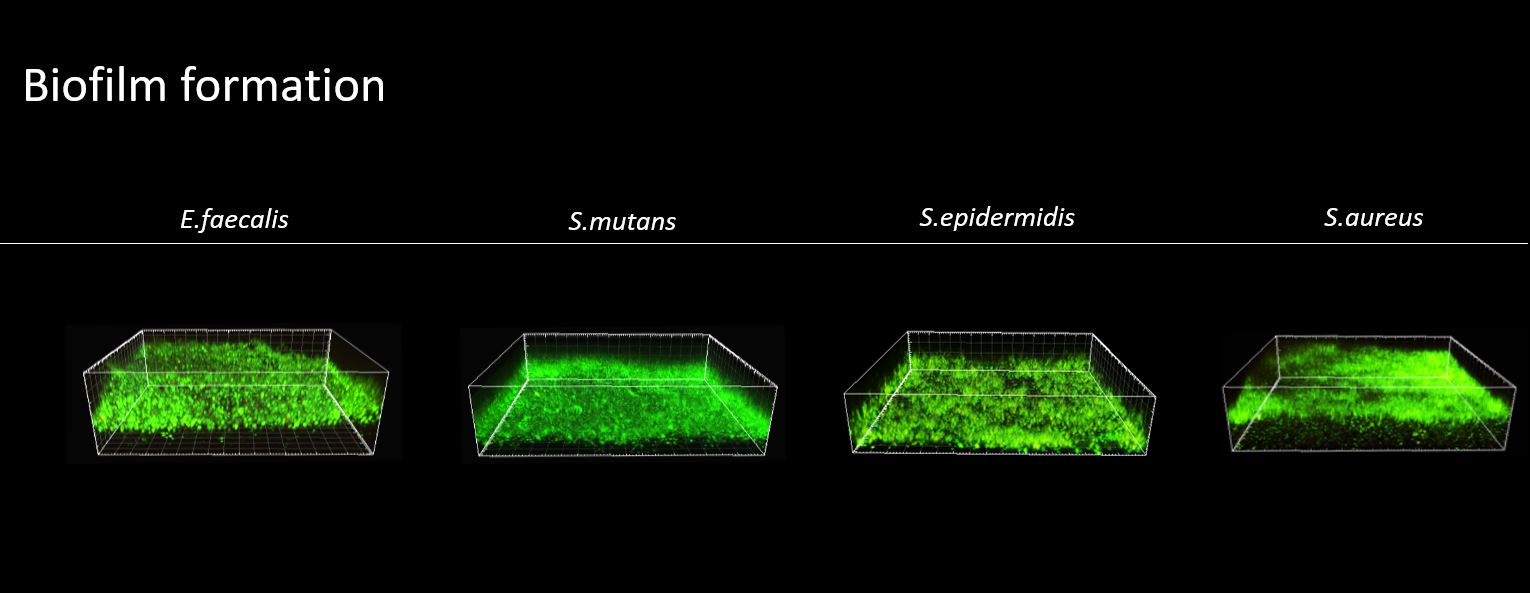Antibacterial effect of CHX as final irrigant
The study was a collaboration between NIOM, The University of Oslo and the University of Birmingham, UK .
CHX increased the antibacterial activity of all the sealers investigated against planktonic bacteria and biofilms.

In a new NIOM study, researchers looked into using 2% chlorhexidine digluconate (CHX) as final irrigant prior to root canal obturation with endodontic sealers, namely AH Plus, BioRoot RCS, and Pulp Canal Sealer (PCS). The results were quite promising.
– The results were positive. The CHX did not affect the sealers’ chemistry, and improved the antibacterial efficacy, says Vasilis Kapralos. As a PhD student at the University of Oslo, he is currently at NIOM, working closely with his advisor, senior scientist Håkon Valen.
The study named “Antimicrobial and physicochemical characterization of endodontic sealers after exposure to chlorhexidine digluconate” was a cooperation between NIOM and the University of Birmingham, UK.
– We established a strong collaboration between NIOM, University of Oslo and the University of Birmingham where I spent approximately two months on an internship. I strongly believe that interdisciplinarity in research creates a beneficial and productive environment. This collaboration produced intriguing outcomes in the field of biomaterials in Endodontics.
Antimicrobial Tests
– We wanted to look into CHX because endodontic sealers play an important role in obturation of the root canal system. The seal they provide can prevent the penetration of bacteria, Kapralos says.
Together with his team, Kapralos investigated the antimicrobial properties by direct contact tests for planktonic and biofilm growth. They used E. faecalis, S. mutans, S.epidermidis and S.aureus in vitro.
Physicochemical characterisation
Besides antimicrobial properties, the sealers were characterized using an ex-vivo tooth model. The setting time, wettability, microhardness and surface roughness were also assessed.
– CHX increased the antibacterial activity of all the sealers investigated against planktonic bacteria and biofilms. PCS exhibited the highest antimicrobial activity with and without the presence of CHX, Kapralos says.
– Surface characterization showed that both AH Plus and BioRoot RCS remained unchanged under CHX irrigation, whilst two additional phases were observed for PCS. Moreover, they found that CHX reduced the microhardness of sealers. For AH Plus and BioRoot RCS, the surface roughness had increased after CHX exposure. It had decreased for PCS.
– The results are promising, but further evidence is needed to confirm CHX suitability as a final irrigant prior to root canal obturation. The potential interaction between CHX and endodontic sealers with various chemistries underlines the need for customization of a clinical protocol regarding irrigation techniques and materials used. The individualization of root canal treatments will ensure that root canal fillings as a whole maintain their antimicrobial properties over time without compromising their physicochemical performance, Kapralos says in closing.

Pictured: Confocal laser scanning microscopic images of E. faecalis, S. mutans, S. epidermidis, and S. aureus biofilms
Reference:
Antimicrobial and physicochemical characterization of endodontic sealers after exposure to chlorhexidine digluconate
Kapralos V, Rukke HV, Ørstavik D, Koutroulis A, Camilleri J, Sunde PT
Dental materials Volume 37, Issue 2, February 2021, Pages 249-263
https://doi.org/10.1016/j.dental.2020.11.011
NIOM Newsletter February 2021
